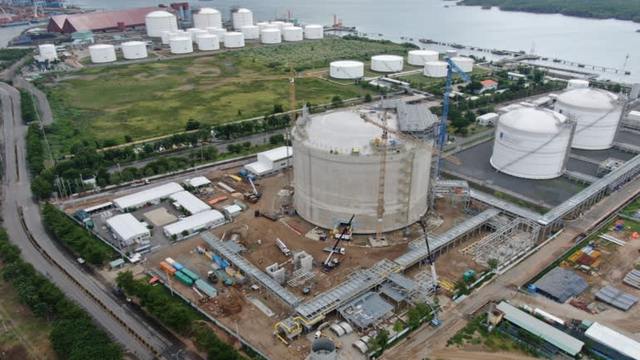Vietnam finds a solution to reduce carbon emissions, getting closer to the goal of zero carbon
In March 2022, Samsung C&T and Vietnam’s Lilama construction company announced a $940 million engineering, procurement and construction contract for a fuel-fired power plant. LNG first in Vietnam. The 1,500 MW plant will be operated by PetroVietnam Power Corporation, a unit of the Vietnam Oil and Gas Group, and is expected to go into operation in 2024 or 2025.
Half of Vietnam’s electricity is produced from coal because it is cheaper and more accessible than other fuels. But the high carbon emissions make coal no longer in line with Prime Minister Pham Minh Chinh’s commitment in November 2021 to achieve net zero emissions by 2050.
LNG, despite being a fossil fuel, produces about half of coal emissions when burned, but is seen as a more promising route to cutting carbon.
According to local media reports, Japan currently has more than 20 LNG-powered power plants nationwide. Tokyo Gas and Japanese trading company Marubeni plan to build a $1.5 billion facility in Quang Ninh province. Japanese energy group JERA is also eyeing the construction of an LNG power plant in the North of Vietnam.
According to Nikkei Asia, more than half of these projects have yet to identify a fuel source. Industry experts forecast: “America will be a leading candidate”.

Construction site of LNG plant in Vietnam. Photo: Petrovietnam Gas
In addition, LNG is also gradually becoming a trend in Southeast Asian countries. In the Philippines, First Gen, an energy subsidiary of real estate conglomerate Lopez Group, is working with Tokyo Gas on an offshore LNG station project, which is expected to begin receiving fuel in early 2022.
Several companies have entered the sector in Thailand since the country began importing LNG in 2011. Gulf Energy Development, a major Thai utility company, and a Japanese trading company Mitsui & Co. is building an LNG and natural gas power plant with a capacity of 2,500 MW. The JPY 175 billion project will start operations in 2023, supplying electricity to the Electricity Generating Authority of Thailand under a 25-year contract.
In the midst of this trend, there is concern in the region about skyrocketing fuel prices. LNG prices in Asia have increased nearly fivefold in the past year, partly due to geopolitical tensions between Russia and Ukraine. With much of Europe turning to LNG as an alternative to gas from Russia, experts say prices will not be able to recover to their original levels.
Meanwhile, electricity suppliers in Southeast Asia are likely to be stuck in unfavorable contracts with suppliers. Offsetting these high prices with an increase in rates can be quite difficult. Compared to stronger markets such as Europe, Japan and China, the expert said that “the barrier to price adjustment to consumers is relatively high”.
The number of countries in the Asia-Pacific that import LNG has doubled in the past 10 years, and the region now consumes more than 70% of the fuel. In 2021, China overtook Japan to become the top LNG importer.
According to British researcher IHS Markit, China’s LNG imports will increase by 18 percent to around 81 million tons in 2021. Meanwhile, Japan’s imports are at around 75 million tons and South Korea’s at 46 million tons. million tons by 2021.
According to statistics from BP, China, India, Japan, South Korea and Taiwan (China) are the only LNG importers in Asia-Pacific in 2010. By 2020, the list This book has expanded to four more countries and several other countries in the region. The import share of this sector has increased from 60% in 2010 to 71% in 2020.
The Association of Southeast Asian Nations is on track to promote future LNG imports along with South Asia. Many countries in these two regions need to meet the growing demand for electricity despite declining natural gas production.
Source: Nikkei Asia
at Blogtuan.info – Source: cafebiz.vn – Read the original article here


![[INFOGRAPHIC] Renewable energy is expected to increase to a record in 2022 3 [INFOGRAPHIC] Renewable energy is expected to increase to a record in 2022](https://cafebiz.cafebizcdn.vn/thumb_w/600/162123310254002176/2022/5/28/photo1653738837381-16537388375231308895310.png)
